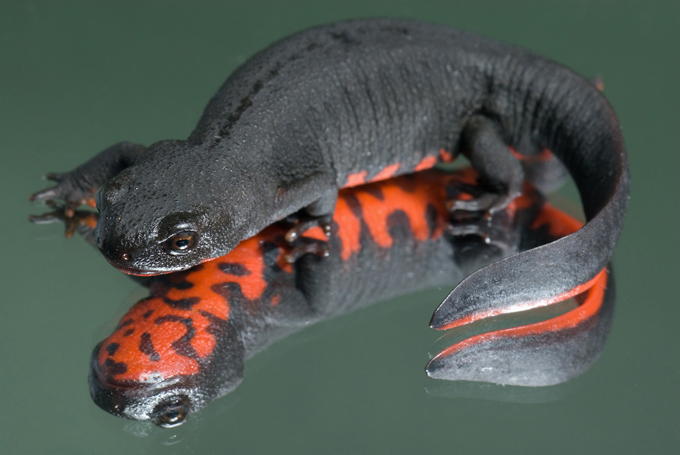Part 42: Regeneration qualities in GUILT and real-life organisms
I thought Derek was cheating in, say, elementary school, which would not be a big deal.
World posted:
Go for it!
Sure thing.

Stranger than fiction: Pempti, regenerating devil
As you see from the latest operation, the space bug of the week has impressive regeneration power, capable of recovering in amazing speed even after substantial parts are being cut off. This is a common trick in non-space-bug life forms; for example, the african violet can grow from a single leaf into a healthy blooming plant, and many fruit trees are grown from cuttings.
In the animal kingdom, regeneration is common as well. A Sponge squeezed through a fine cloth can regrow from the tiny bits that result from the said squeezing. A freshwater hydra, when bisected, grows into two new individuals. The starfish is capable of the same feat as well, and sea cucumber's defense involves spitting out its sticky intestines, which grows back in time.
“But Jeek,” you protested, “they don’t even have a proper spine. Give me a higher animal!”
Okay, you
 *, check out this cutie then:
*, check out this cutie then:
Yes, the newt in your neighbourhood pond is a super regenerator.
In 1768, the Italian biologist Lazzaro Spallanzani discovered that newts are capable of regenerating lost body parts. Since then, scientists have been
Newts are capable of growing back limbs, lungs, the spinal cord and even part of the brain. But for now, we will focus on what happens when a newt loses a limb. When it happens, a clump of cells called a blastema would form at the tip of the stump. The blastema then grows into the various cells types – skin, muscle, bone, etc. – needed to build a new limb. In axolotl, it would take three weeks for the blastema to grow into a fully functional limb – without a single scar. If only the protagonist of the first Saw movie was a newt.
Scientists originally believe that blastema works because they are “reset” to become pluripotent; that is, it is capable of becoming a cell of any type you can find in the organism. (Embryonic stem cell would be a good example of pluripotent cell.) However, an experiment in 2009 suggests that the cells in the blastema are actually derived from “old” cells next to the wound, i.e. ‘new’ muscle cells are from ‘old’ muscle cells, new skin cells are from old skin cells, etc. While the result is out of scientists’ expectations, it actually raises hope in future medical research, because this is closer mammalian cells’ natural capability, and while it is possible to make adult human cells pluripotent, those cells are difficult to control and have a nasty tendency to form tumours.
By the way, from Pempti’s tendency to spew tumours left and right, it seems possible that Pempti regenerates via pluripotent cells.
Newts have overturned other long-held beliefs on regeneration as well. For a long time, scientists thought that regeneration rate slows down with age and repeated removal, which is consistent with what we see in human patients. However, Researcher proved it is not necessarily the case – by removing the lens from a newt (Cynops pyrrhogaster, the species featured in the above picture**) 18 times over 16 years. Upon examining the last removed lenses and those from other newts that have never undergone the operation, the researchers find no difference between the two. I would suggest reading the report, if only to appreciate the horror of living a life alternating between
 and
and  . Thank goodness that the newt is incapable of comprehending what is going on.
. Thank goodness that the newt is incapable of comprehending what is going on. 
* The request is worthy of a
 because the term “higher animals” suggests that the animals can somehow be ranked, when observations has proven that even though evolution may have directional trends, it has no ultimate goal, thus it is meaningless to designate any organism as “higher” or “lower”.
because the term “higher animals” suggests that the animals can somehow be ranked, when observations has proven that even though evolution may have directional trends, it has no ultimate goal, thus it is meaningless to designate any organism as “higher” or “lower”.** The newt may actually be of the related species Cynops orientalis, but it is the first pretty firebelly newt picture on GIS, so deal with it.
